 Converting Victorian Coal Fires Gas VS Electric VS Heat Pump
Converting Victorian Coal Fires Gas VS Electric VS Heat Pump
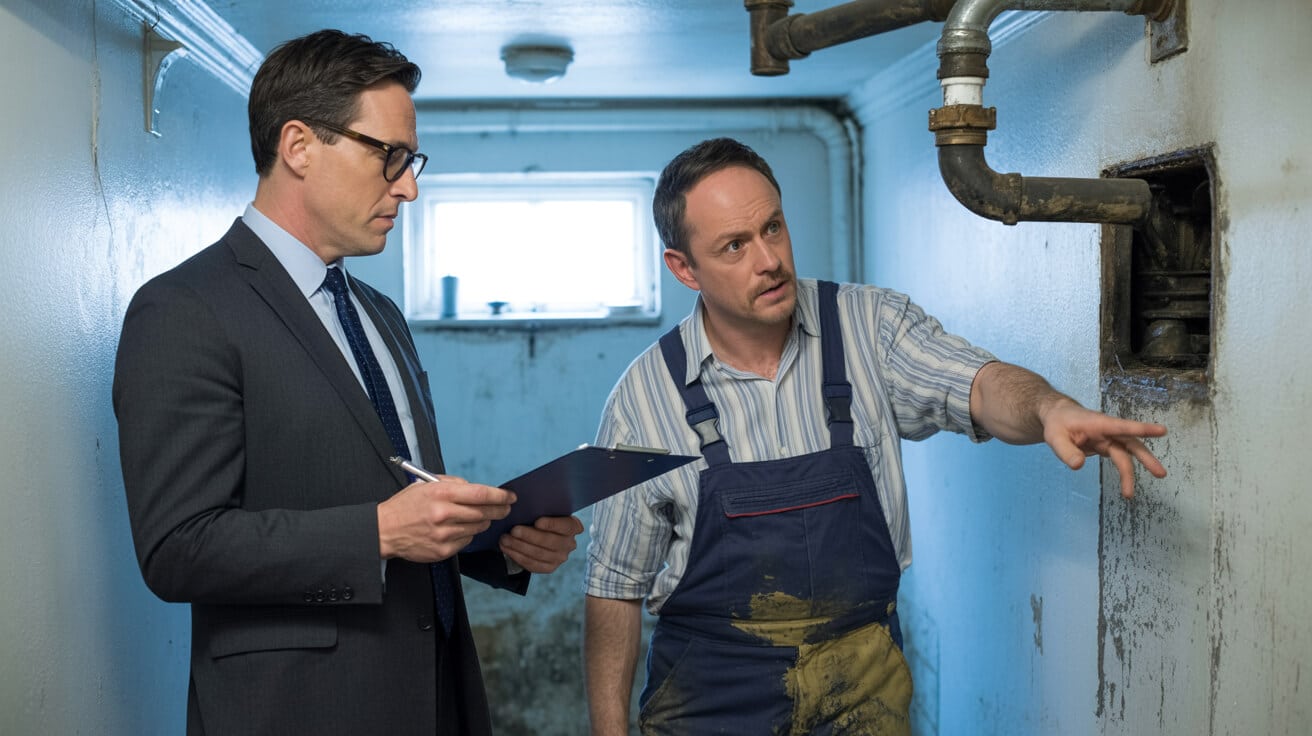
Can You Modernise a Victorian Fireplace Without Losing Its Value or Charm?
Preserving a Victorian fireplace isn’t just about curb appeal—it’s about safeguarding the “storey” and integrity of your property. Whether you’re a homeowner, landlord, or asset manager, that original hearth signals provenance, attracts quality tenants and buyers, and can directly influence valuations by up to 10% (Express 2022). Ignore this heritage, or worse, rip it out with no plan, and you risk more than lost beauty—you can undermine your home’s selling power and trigger compliance issues that drag on for years.
The fireplace is the anchor of your property’s character—touch it right, and you set yourself apart from every quick flip on the market.
Fast-changing standards and soaring energy costs are making everyone rethink the traditional hearth. The old burning coal days are over, but so is the era of single-use rooms or uninsulated walls. Today, authorities and buyers expect you to champion both comfort and carbon savings—without sacrificing what makes your place unique. UK building regs and council grant schemes are on your side if you plan wisely.
Bottom line: you never have to choose between period authenticity and a warm, future-proof home. With the right sequence—assessment, compliance, and proper specialists—you can modernise a Victorian fireplace, boost value, and still pass the “wow” test for years ahead.
What’s Driving the Urgency to Modernise Victorian Fireplaces Now?
Rising energy prices, stricter EPC rules, and increasing demand for “character” homes are all converging. That means every decision about your fireplace is magnified: the right call preserves value and comfort, while shortcuts—like removal or careless upgrades—become glaring regrets at sale or letting. If you want to remain competitive and compliant, it’s not about rushed solutions; it’s about integrating the past with low-risk modern standards.
Which Is Riskier: Removing, Covering Over, or Modernising a Period Fireplace?
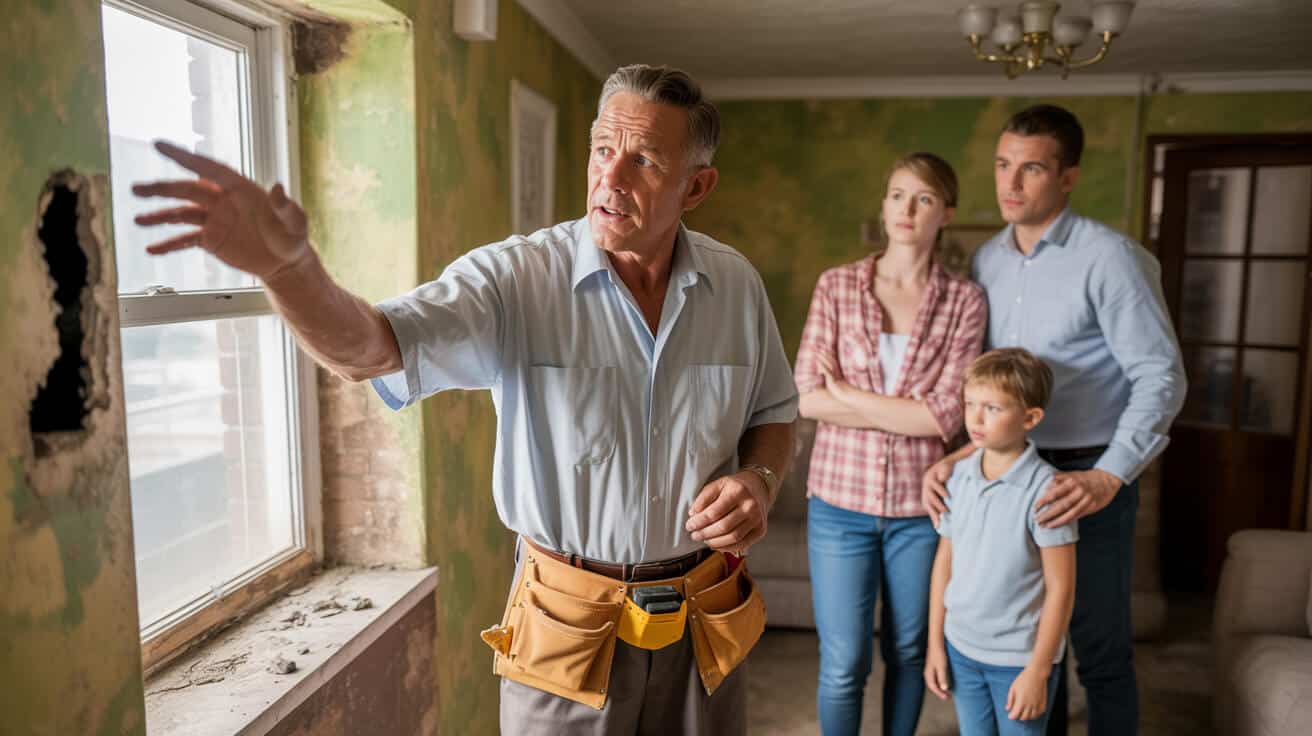
The temptation to “clear out” a redundant or crumbling Victorian fireplace is real—especially when budgets are tight or renovation fatigue is setting in. However, shortcut removals (typical cost: £150–£250) nearly always lead to bigger, more expensive headaches. Why? Because that fireplace is more than pretty brickwork. It’s a structural element, a regulatory landmine, and a marketplace signal, all in one. Dump it, and you might well:
- Lose rental or resale value:
- Create new compliance risks (especially in conservation areas)
- Trigger building or moisture problems previously “covered” by the hearth’s structure
Quick fixes can make lenders, surveyors, and buyers suspicious—especially if paperwork or visual cues don’t line up. Local authorities may even mandate “like-for-like” reinstatement if you can’t document why modifications were made.
Most heritage consultants, valuation surveyors, and property lawyers now urge one of three approaches:
- Recondition or restore: the existing surround—even if it’s only decorative.
- Add a reversible insert: (gas effect, electric, or even sealed “bioethanol”) that keeps the period mantle and tiles centre stage for the next owner.
- Document absolutely everything: during works—permits, quotes, even before/after photos.
The value rarely drains because of change; it’s lost when the storey and paper trail run dry.
Who’s Legally on the Hook If You Skip Heritage Compliance?
In listed or conservation properties, you’re the “responsible person” for all alterations. That means the cost of making things right—sometimes years later—falls on your budget, not the next occupant or contractor. Even non-listed homes come under scrutiny: compliance or missing paperwork can force a rethink at remortgage, let, or sale. By thinking ahead, you control the narrative—no last-minute panic calls, no “why is this bricked up?” delays on moving day.
How Do Gas Fire Inserts Combine Real Flame with Modern Safety and Efficiency?
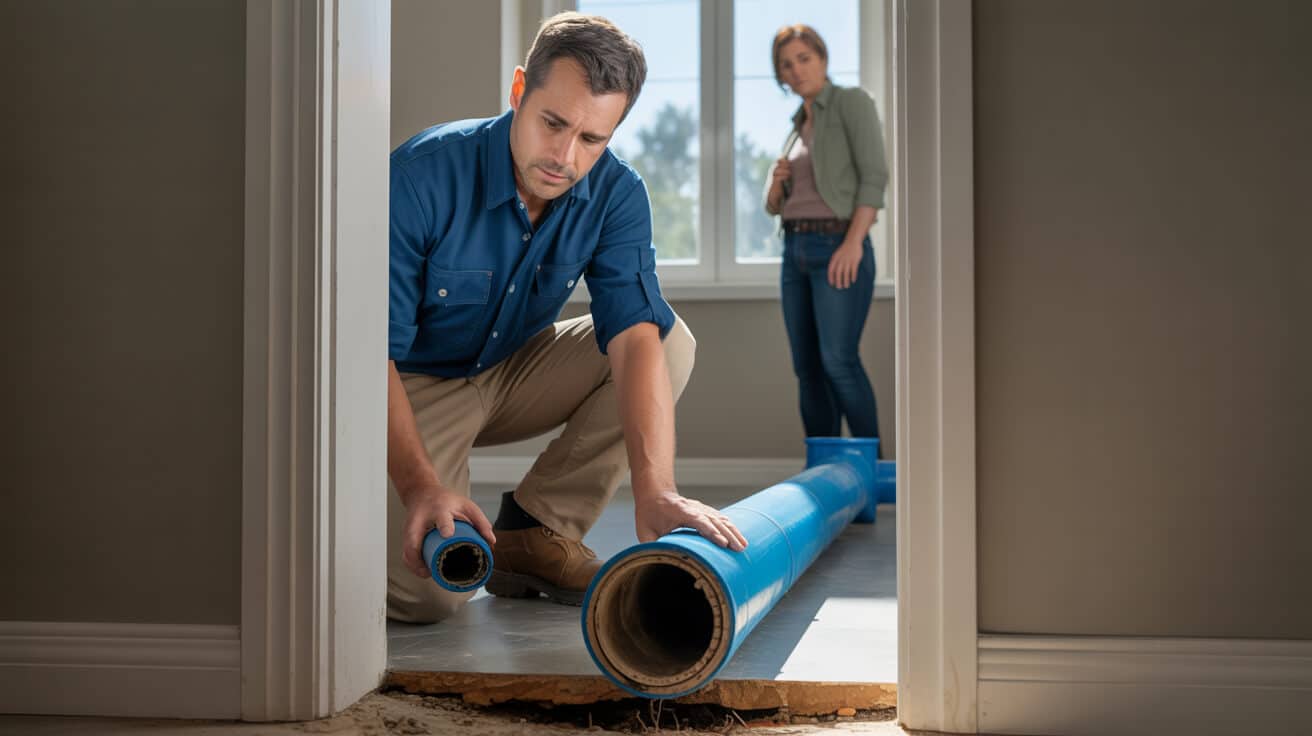
Looking to blend period flair with modern comfort? High-efficiency gas fire inserts can deliver the best of both worlds—authentic flame, robust heat, and tight control over safety and emissions. With certified systems, you can push room output up to 7kW and achieve energy efficiencies of 75–85%, slashing ongoing heating costs compared to traditional coal grates (PropertyRescue 2025).
Key requirements:
- A full Gas Safe Registered engineer assessment—absolutely non-negotiable for any live instal or conversion.
- A certified flue (usually a stainless steel liner) to carry combustion gases safely.
- Compliance certificates for home insurance, Building Control, and eventual resale.
Pricing? Expect £3,500–£8,000 all-in, covering the insert, compliant fluework, and instal. Compared to electric or effect fires, this is a brand-level investment. In conservation or listed buildings, be prepared to document that the external chimney stack and pot remain untouched.
Gas fire inserts are your go-to if you want:
- A visible, real flame with strong heat in larger rooms
- Minimal aesthetic disruption: —the period mantle remains the hero
- Reliable, regulated comfort for years, with paperwork to satisfy any surveyor or insurer
A properly installed gas insert brings the period look and 21st-century efficiency—no buyer or regulator can argue with that combination.
What Can Go Wrong With Gas Fire Upgrades in Heritage Settings?
If you skip proper flue assessment, hire uncertified trades, or fail to secure consents, you risk failed safety checks, carbon monoxide leaks, or legal action. Always log work with your local Building Control, keep your Gas Safe certificate, and file all documents with your home records—future you (and your buyers) will thank you.
When Does an Electric Fire Insert Make Sense for a Victorian Fireplace?

Electric fire inserts offer instant comfort and keep your period fireplace visually intact. They’re the lowest-disruption method for making a cold, lifeless hearth a true feature—and they work almost anywhere. Installation is fast and clean: a single outlet, tidy cabling, and careful mantle integration mean you’re finished in hours, not days.
Why electric fires are dominating Victorian upgrades:
- Cost-effective: £700–£2,500 supply and certified fit
- No major building work or flue rerouting—completely reversible for conservation
- Ideal for properties off the gas grid: or under strict council conservation rules
- Favoured for rental/HMO settings, where compliance hurdles are highest
Modern electric models have advanced immensely—many feature realistic flame visuals, LED effects, and output up to 1–2kW. For average-sized sitting rooms, this is plenty, especially if paired with efficient home-wide heating. Bigger rooms, draughty walls? Supplement with other upgrades: electric alone isn’t magic on high-loss Victorian structures.
An electric insert is the ultimate safe bet for charm and compliance—plus, the paperwork is refreshingly simple.
What Safety and Paperwork Should You Watch for With Electric Fireplaces?
Only use a qualified, NICEIC-registered electrician. Why? Many Victorian homes still rely on dated, non-earthed wiring—improper instals can be a hidden compliance and insurance risk. Choose only UKCA-marked units, require installation certificates, and add these to your property documents for fast-lane sales or lending.
Is a Heat Pump the Ultimate Solution for a Victorian Home, or Overkill for Just the Hearth?
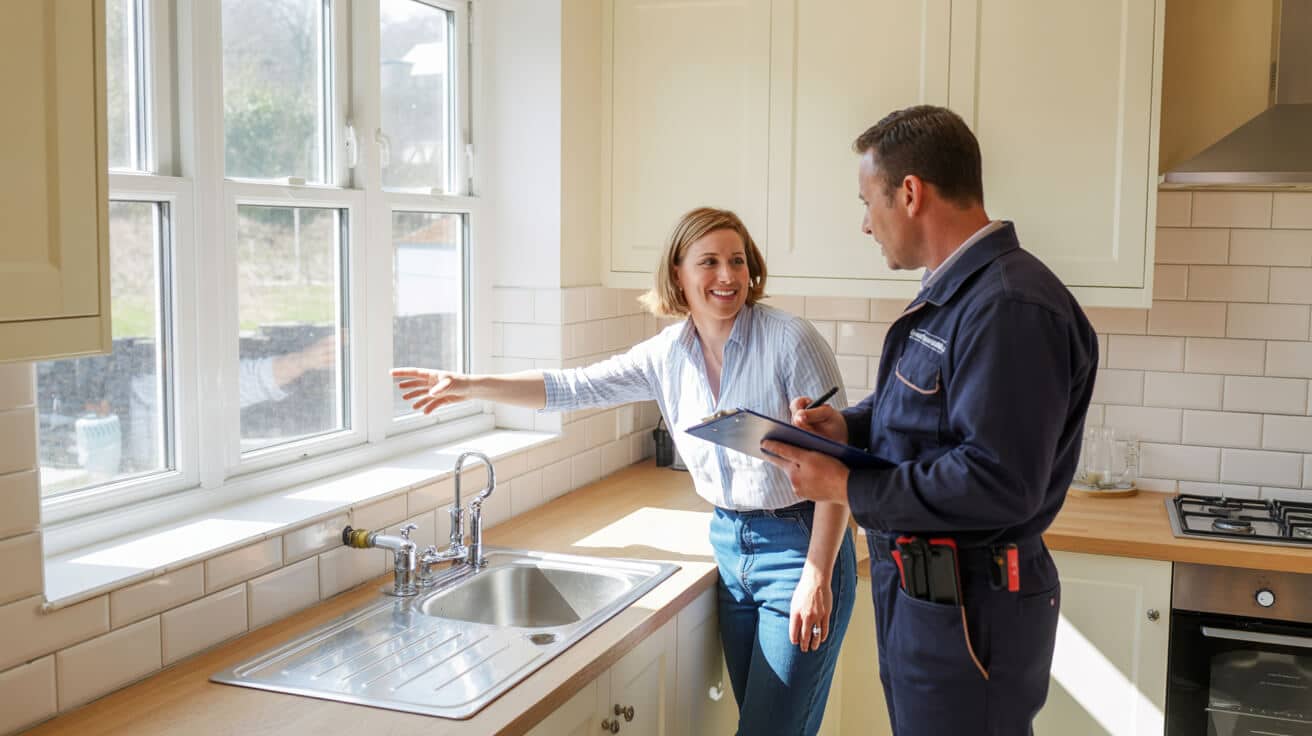
Air source heat pumps (ASHPs) are hands-down leaders for green home upgrades—but they’re more marathon than sprint. Installing a heat pump isn’t just about that nostalgic hearth; it’s an entire whole-property exercise. The systems themselves are marvels: with efficiency rates of 300–400%, you move into a world where every kWh of electricity returned as three to four units of warmth (DesignTeam).
What’s the catch? Full supply and fit starts at £10,000–£15,000, before you budget for insulation improvements, new radiators, or groundworks. The government’s £7,500 Boiler Upgrade Scheme gives many heritage and family homes a powerful head start, but only if you play within building control and conservation rules.
If you care about net-zero targets, higher EPCs, and drastically lower carbon use, heat pumps are unbeatable. For period homes, they often mean:
- A sealed, decorative fireplace—and a primary heating focus shifted to underfloor, wall, or ceiling-based solutions
- Major pre-works: air-tightness and insulation upgrades are vital before low-temperature heating makes sense
- Strict need for planning, listed building, and Building Control approvals, especially for outdoor units
A heat pump is your forever home move—combine it with a tastefully restored (or decorative-only) Victorian fireplace for maximum value and long-term comfort.
Why Is a Heat Pump Usually Overkill for Just the Room?
Retrofitting a heat pump only for the living room or one hearth won’t stack up on cost or comfort. These are best suited to “deep retrofit” projects, where you’re already investing in insulation, glazing, and smart controls. If your aim is to modernise the fireplace for looks and occasional use, gas or electric inserts are much more logical.
What Compliance Steps and Legal Traps Do You Face When Changing a Period Fireplace?
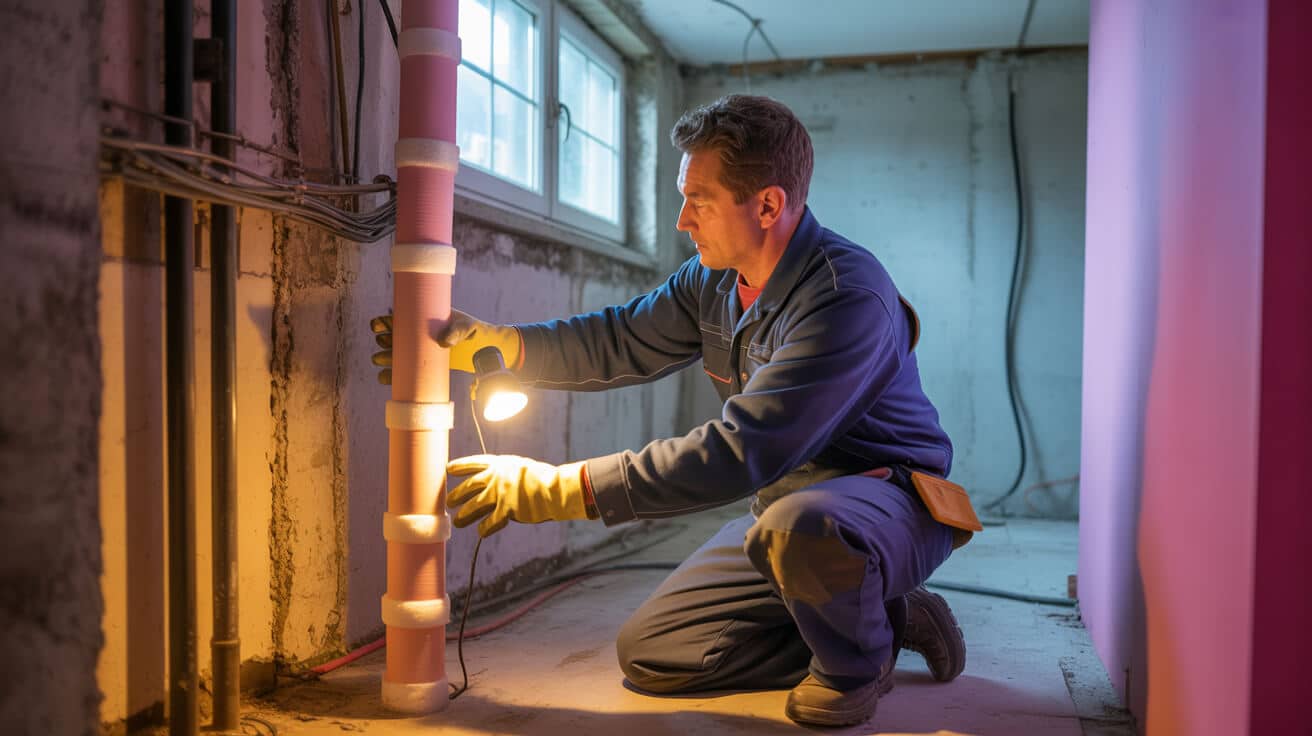
Heritage fireplaces, especially in listed buildings or conservation areas, fall under the Planning (Listed Buildings and Conservation Areas) Act 1990. Even apparently “minor” changes—like removable electric inserts—can cross the line if they alter key features or skirt reversibility. For every alteration, document these steps:
- Check with your local authority: —even non-structural swaps can require approval.
- Secure listed building consent for any protected property.
- Use only certified contractors—Gas Safe for gas, NICEIC/EIC for electrics, MCS for renewables.
- File all works for Building Control sign-off if you touch flues, insulation, or major structure.
Regulation-led upgrades add £500–£2,000 to your bill for specialist advice and paperwork, but missing this paperwork can cost far more:
- Missed consents can force expensive corrections or reinstate the fireplace.
- Lack of certificates can block sales, insurance, or new tenant agreements.
Forget the folklore—compliance paperwork is the only thing that proves your fireplace upgrade was done right.
What Hidden Documentation Traps Take Owners by Surprise?
Time and again, sales fall through or fines pile up because works weren’t certified or receipts were lost. Keep digital copies of every certificate, quote, and photo log. Smart records clear the way for smooth deals and avoid regulatory standstills when you want to move or remortgage.
How Do Gas, Electric, and Heat Pump Options Compare for Cost, Complexity, and Efficiency?
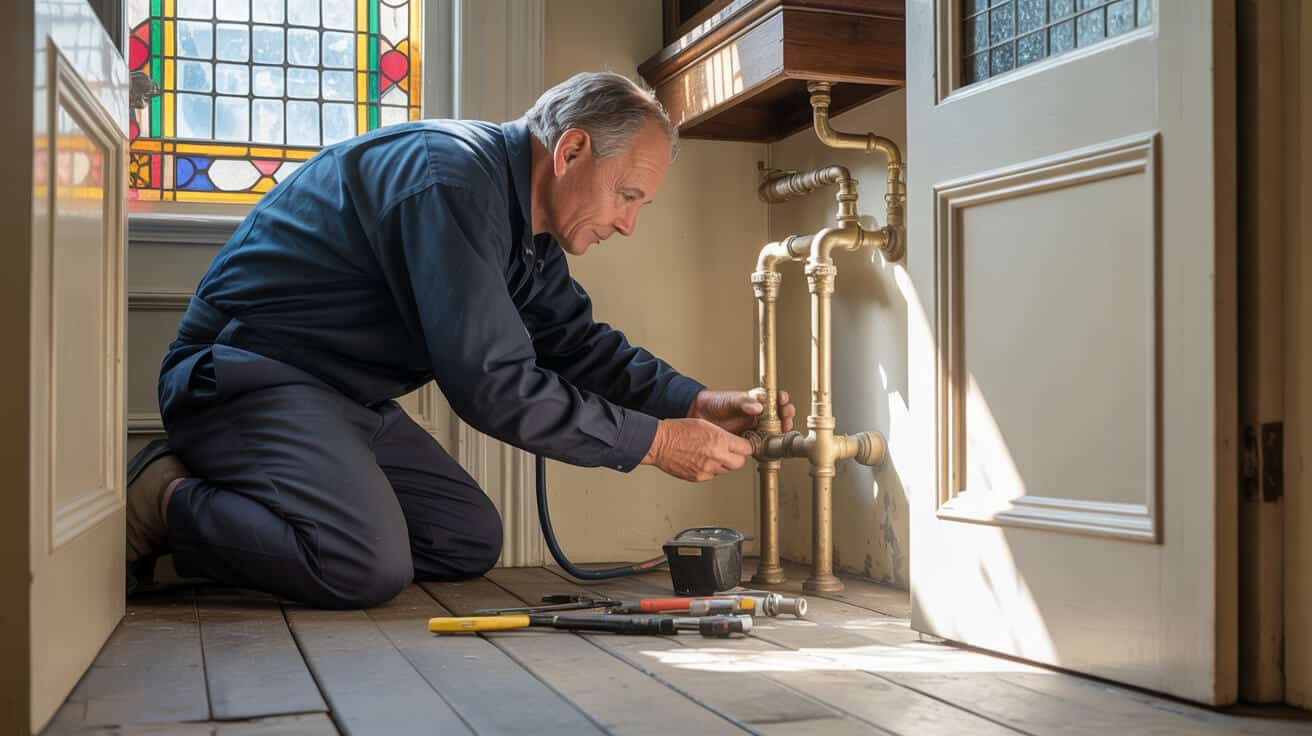
With cost, complexity, and reversibility on the line, it’s smart to compare all the main options before touching your Victorian fireplace. Here’s how the three stack up side-by-side:
A balanced review shows:
| Option | Installed Cost | Annual Running* | Efficiency (UK typical) | Reversibility | Key Certification |
|---|---|---|---|---|---|
| Gas Insert (flued) | £3,500–£8,000 | £250–£400 | 75–85% | Moderate | Gas Safe, Building Regs |
| Electric Insert | £700–£2,500 | £350–£600 | 100% at plug | Full | NICEIC, Building Regs |
| ASHP (heat pump)† | £10,000–£15,000 | £300–£500 | 300–400% (COP 3–4) | Limited | MCS, Planning/Regs |
*Based on standard supply, fit, and average UK winter usage. Actual figures may change with insulation, grant eligibility, or home size.
The main takeaway: electric inserts are the simplest, most reversible upgrade, ideal for city flats or rentals. Gas inserts win for bigger rooms and heritage authenticity (where regulations allow), and heat pumps are the top investment for long-term value—but mainly for whole-home upgrades.
Modernising the fireplace isn’t just an aesthetic call—it’s about keeping every option open for the next 10–20 years.
What Mistakes Drain Value and Bring Compliance Risk—And How Do You Guard Against Them?
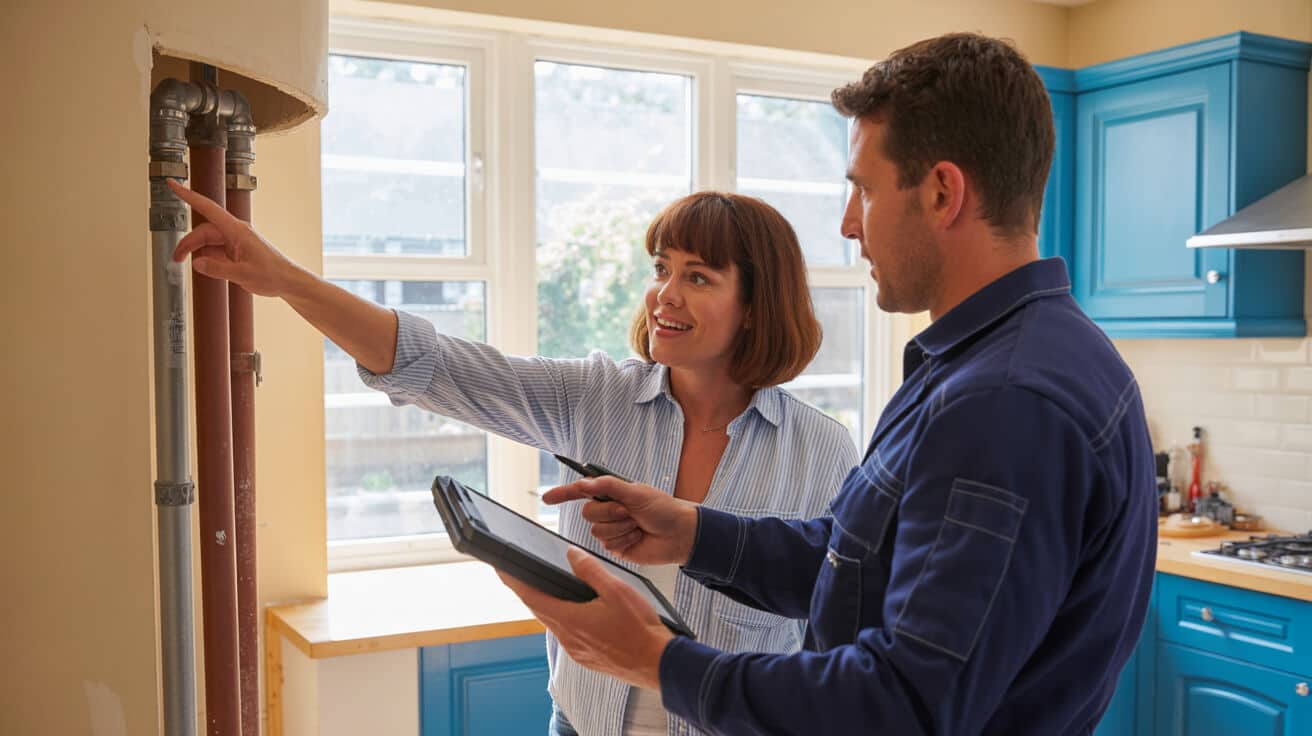
It’s easy to lose value (and sleep) through missteps that come back to haunt you. Here are some of the most damaging blunders owners, landlords, and even eager DIYers make:
- Ripping out or hiding a period fireplace without the right consents—a move that can force costly reinstatement if your council steps in.
- Using unregistered contractors for gas or electric work—voids insurance, delays sales, and could trigger refusal at Building Control.
- Neglecting to collect and keep all paperwork—no certificate, no proof, no easy sale (or let) next time.
- Fitting the “wrong” insert for your building’s age or style—only to face both technical and market pushback later.
- Leaving poor moisture or ventilation behind after blanking off a hearth—damp and rot love a hastily sealed chimney.
Best practice is simple:
- Confirm all legal, planning, and conservation obligations *before* you start.
- Always select certified, specialist trades with proper heritage or building paperwork experience.
- Digitally store every photo, receipt, certificate, and quote—this “evidence pack” is your insurance if questions crop up.
- For landlord portfolios, roll compliance checks and documentation into your annual property reviews.
The shortcut you take today can become the stumbling block on the day you want to cash in. Make your paperwork as strong as your finish.
What’s the Smartest Step-by-Step Plan for Modernising a Victorian Fireplace Safely and Profitably?
Work in ordered stages to get the benefit—without risking value, comfort, or reputation. Here’s how savvy owners and asset managers break it down:
1. Evaluate Your Property and Goals
- Is the building listed, in a conservation zone, or “plain” housing stock? This shapes the compliance path.
- Who will use the fireplace—a family, a tenant, or a high-turnover let?
- Is the aim heating, ambience, or pure restoration?
2. Engage the Right Certified Specialists
- Use only Gas Safe installers for gas work.
- For electrics, go with a NICEIC-registered electrician (bonus if heritage-trained).
- For heat pumps or major upgrades, stick to MCS and TrustMark-accredited firms—fluent in period property challenges.
3. Lock in Quotes and All Approvals Before Work
- Compare clear, like-for-like quotes—covering all warranties and reversibility.
- Secure all relevant consents (planning, listed building, Building Control) *in writing* before you break ground.
- Fix project dates and deliverables so everyone’s accountable.
4. Oversee Installation, Documentation, and Handover Properly
- Document every phase—snap photos pre-work, during, and at finish, file all in your property log.
- Collect every certificate (Gas Safe, NICEIC, MCS), and warranty registration—keep digital copies.
- Ask for “handover packs”—a bundle of usage, aftercare, and guarantee documents.
5. Embed Maintenance and Compliance Checks Into Your Routine
- Schedule annual servicing reminders—for appliances, certificates, and document refresh.
- Integrate compliance document checks into your letting or sales prep; missing paperwork kills deals.
- Make maintenance logs and digital folders a selling (and landlord) tool, not an afterthought.
The result? Peace of mind now, with future-proof resale and letting power.
Arrange a Heritage Heating Survey with Plumbers 4U Today
Your period fireplace is more than a centrepiece—it’s a lever for market value, comfort, and stress-free compliance. Booking a heritage heating survey with Plumbers 4U ensures you don’t have to pick between tradition and progress.
Benefit from:
- WRAS-approved, regulation-aligned recommendations: —always with reversibility and property value in mind.
- Clear, action-focused reports—diagrams, real costings, and EPC/compliance guidance you can use or share.
- Work completed by Gas Safe, NICEIC, and MCS-trained teams—your guarantee of safety, longevity, and value.
- Client aftercare: user training, digital document packs, and proactive maintenance reminders mean you’ll never lose pace with new rules or market shifts.
Ready to safeguard your home’s storey—and your peace of mind? Arrange your specialist visit today and keep both your comfort and heritage future-proofed.
Frequently Asked Questions
What overlooked compliance risks now catch out Victorian fireplace upgrades, and how can you avoid a nasty “rip-and-replace” order?
Every year, councils and inspectors spot new wrinkles in heritage and energy law that most homeowners miss. A reversible electric insert—or a plug-in heater—can still be illegal in a conservation area if you haven’t secured planning consent or listed building approval up front. Councils increasingly cross-check installer credentials, not just paper certificates, and heritage teams may demand full restoration even for “temporary” upgrades if protocol is breached. For gas or heat pump conversions, compliance has split into two hurdles: Building Regs now require technical submission and performance signoff, while grant-eligible upgrades (like the Boiler Upgrade Scheme) outright demand named, MCS/TrustMark engineers for commissioning, plus post-fit audit logs. If a chain breaks (from installer registration to carbon monoxide test), you face not just a pause, but possible strip-out and reapplication—with substantial lost value.
It only takes one missing consent or expired ID to trigger a ‘remove and restore’ order—insurance and sale paperwork grind to a halt when compliance trails run cold.
The best safety net is a partnership with compliance-literate installers who handle forms, registry entries, and photographic evidence at every stage. Plumbers 4U stands out by bundling heritage advocacy and regulatory navigation, so your upgrade meets modern code without trampling period rules. Before booking works, demand a staged compliance map—itemise permissions, installer registers, and certification dates, and insist on digital backups for inspection or resale.
Which documents and checks are non-negotiable for compliance?
- Proof of council consent or listed building approval, not just “intent to notify.”
- Current Gas Safe, NICEIC, or MCS/TrustMark installer ID—expiry date matters.
- A full “before and after” site photo record, with serial numbers and certificates attached.
- CO/smoke alarm verification logs for permanent gas or heat sources.
Why does the right heating system choice for a period fireplace have a make-or-break effect on your EPC rating—and what combinations spark unexpected EPC downgrades?
The difference between a period property that soars from “E” to “C” and one that sinks into rental limbo hinges on appliance choice, room insulation, and proper sealing. Gas inserts only score highly in EPCs when they not only displace an open fire but also include flue sealing and draught mitigation; an open or unsealed chimney will crater your energy rating even after a “modern” appliance is added. Electric fires promise low mess, but most models count as “direct resistance heating” in EPC calculations, a category that nearly always scores worse unless running on dedicated low-carbon tariffs or paired with deep insulation. Heat pumps are the darling of the rating tables—but only if sized for the property’s radiator setup and window spec, with post-fit cylinder insulation and thermostatic controls. All the uplift vanishes if you neglect to upgrade old sashes or botch radiator sizing; incomplete upgrades can shove you below MEES minimum thresholds, with letting and resale bans as the fallout.
EPC rules reward comprehensive upgrades, not bolt-ons. A flashy new insert—without thermal sealing or matched controls—can tank your score and trip compliance penalties.
Plumbers 4U’s engineers take the guesswork out, running predictive EPC calculations based on your actual property features and recommending stepwise upgrades that are both legal and market-proof. Book your EPC pathway consult before any work, and align appliance spec with insulation, controls, and permission requirements line by line.
What system/common mistakes hurt EPC ratings most?
- Leaving chimneys or unused flue runs unsealed post-upgrade.
- Installing heat pumps without up-rating radiators or adding cylinder lagging.
- Choosing plug-in electric fires as a primary source without insulation or green energy supply.
- Skipping sash window repairs or leaving single-glazing untouched in living rooms.
In what ways do modern compliance checks raise the stakes for landlords, letting agents, and property managers handling fireplace conversions?
regulatory compliance for rented or managed properties is now a continuous process, not a once-and-done tick box—especially for Victorian or listed homes. Since 2022, the absence of live compliance logs, annual servicing records, or digital Gas Safe and MCS uploads can flag properties as non-compliant on major letting portals or council databases. Tenants can now request immediate documentation and, in its absence, force emergency remedial works or even prevent a tenancy renewal. Heat pump installations bring a multi-year “evidence of use” and maintenance obligation under the Boiler Upgrade Scheme; landlords failing to supply annual proof of in-use status risk losing grants—thousands can evaporate, or worse, force compliance-driven voids. For heritage buildings, every adaptation—flue liner, new hardware, even decorative changes—must have photo logs and an unbroken trail of approved modification records, as audits often surface years after the work.
The costliest voids aren’t due to broken boilers—they’re caused by compliance gaps that grind the letting or renewal process to a halt.
Work with installation teams that automate compliance: Plumbers 4U supplies digital “audit trails” with time-stamped photos, e-pdf certificate packs, and annual service reminders for every job. Portfolio landlords and managing agents get cloud-based record access, ensuring you’re always audit-ready and never caught out by a paperwork check at renewal.
Fastest ways to ensure audit-ready, rental-safe upgrades:
- Book only installers who supply digital certification and real-time compliance logs.
- Register all upgrades on Gas Safe, NICEIC, or MCS databases within 48 hours.
- Bundle annual service and compliance check-ins as part of maintenance contracts.
What irreversible mistakes are still being made during Victorian fireplace conversions, and how does expert sequencing preserve heritage while future-proofing your upgrade?
Despite modern awareness, outbreaks of heavy cement filling, intrusive cable runs, and off-the-shelf “fix-all” fitting techniques are still sidelining period authenticity and future reversibility. Every instance of pipes routed directly through original brick, expanded foam injected under surrounds, or tilework marred by adhesive signals a contractor who treats heritage as disposable. Unnecessary stripping or “boxing in” period features crushes long-term value; buyers and surveyors increasingly demand “reversible works only” certifications for high-value homes. Even with the right appliance, a single wrong bracket, skipped documentation photo, or generic fitting can cost thousands to undo—insurance claims and mortgage approvals now depend on meticulous, documented respect for period detail.
What’s often missed is the value of installation sequencing: starting with a detailed photographic survey and reversibility route, using WRAS-approved flexible connections and non-invasive brackets, planning precise cable routing, and explicitly specifying “minimal impact” on all joinery and tilework. Plumbers 4U walks each step with you, mapping non-destructive routes and building a per-feature restoration plan.
You don’t get a second shot at period fabric—true value lies in foresight, not guesswork or brute force.
Ask your installer for a documented reversibility assessment, photo log, and a parts list before works begin. Insist that all major interventions use adjustable brackets, reversible flue liners, and WRAS or heritage-approved materials.
Common mistakes to avoid for genuine reversibility:
- Direct embedding of pipes or wires: always seek adjustable casing or surface-mount with tidy trunking.
- Insulating, filling, or mounting with permanent fixatives (foam/cement): opt for approved non-destructive alternatives.
- Installing without a start-to-finish photo record and a complete list of product part numbers.
What kinds of comfort and cost improvements result from carefully modernising a period fireplace, and how are these best secured?
Moving from an open Victorian fire to a sealed, modern appliance—gas or heat pump—can slice winter energy bills by up to two-thirds if insulation and heating circuit upgrades run in tandem. Gas inserts, when partnered with flue sealing and smart thermostats, deliver not just fast warmth but year-round air quality gains by cutting draughts and soot risk. Heat pumps that are sized and balanced for the property yield both an EPC band lift and annual savings of £300–£700, but only if radiators and controls match the low-temperature system.
Family comfort multiplies when thermostat schedules pair with child-safe settings and even remote app control—vital in busy or multi-occupancy scenarios. A retrofit that links upgraded fireplace, zone heating controls, and “balanced and bled” radiators secures both the classic ambiance and the 21st-century convenience most buyers covet.
In the right hands, your period upgrade creates savings and comfort for today, while preserving the unique character that buyers value tomorrow.
Ask for a full “comfort profile” survey—Plumbers 4U specialists lay out not just appliance spec, but rehabilitation of sash windows, secondary insulation, and routine balance checks so you get maximum savings and year-round peace of mind.
Top tactics for return-on-investment and comfort:
- Pair any fireplace upgrade with high-performance controls and an insulation audit.
- Combine jobs: do fireplace works when refurbishing windows or adding insulation for better savings.
- Get annual post-upgrade system check-ups—comfort and bill stability improve with routine radiator bleeding and control recalibration.
Where do most fireplace conversion projects go wrong on cost, timing, or documentation—and how can a transparent, fixed-scope process prevent setbacks?
Budget overruns and deadline slips usually spring from two sources: ambiguous documentation and “we’ll sort it later” mindsets. Skipped planning permissions, missing compliance files, and unclear project scope delay heritage sign-off, mortgage approvals, and insurance payout when something goes wrong. Lenders and insurers increasingly want granular, stepwise evidence for both completed works and future risk, not just a finished photo or generic invoice.
Second are discoveries—hidden supply lines, fragile brick, surprise compliance changes—that are only expensive if your contract or team can’t react with agility. The best defence? Front-load your process: commission a full heritage and compliance survey before work. Demand a fixed-scope quote with separate line-items for every permit, part, or contingency, and use installers whose team includes both heritage and energy compliance skills. Plumbers 4U commits to all-inclusive, transparent pricing, proactive client updates, and documented contingency steps—each job mapped to council standards, not just a generic spec.
The success of every renovation hinges not just on skill, but on precise planning and absolute transparency at every stage.
For peace of mind, require a pre-works permission and risk map, and only green-light works when every box—heritage, building regs, service integration, and ongoing maintenance—is signed off both on paper and in digital logs.
Steps to keep project and budget under control:
- Commission pre-works survey from a team versed in both heritage and modern compliance.
- Require fixed-scope written quotas, detailed permission schedules, and backup documentation.
- Choose a contractor with a proven heritage-to-EPC pipeline and transparent client communication practices.
